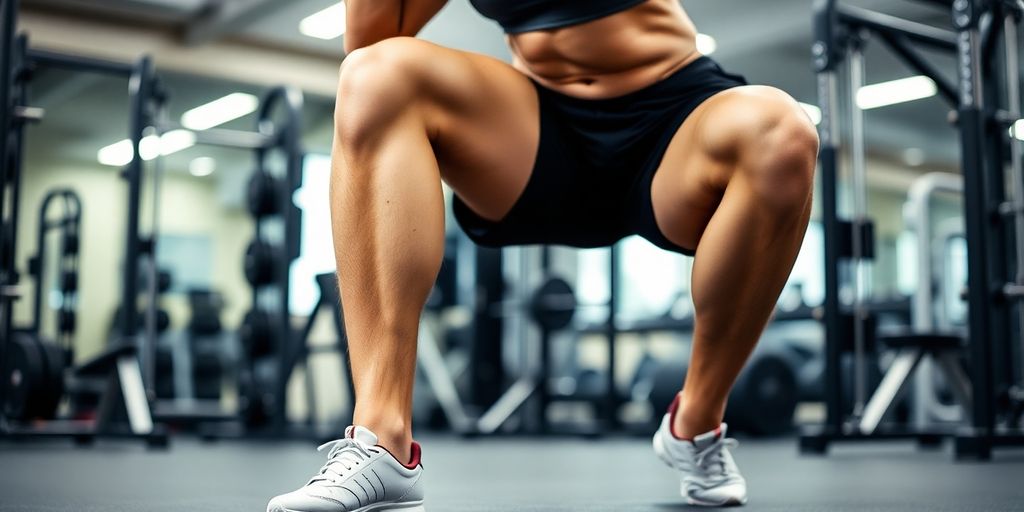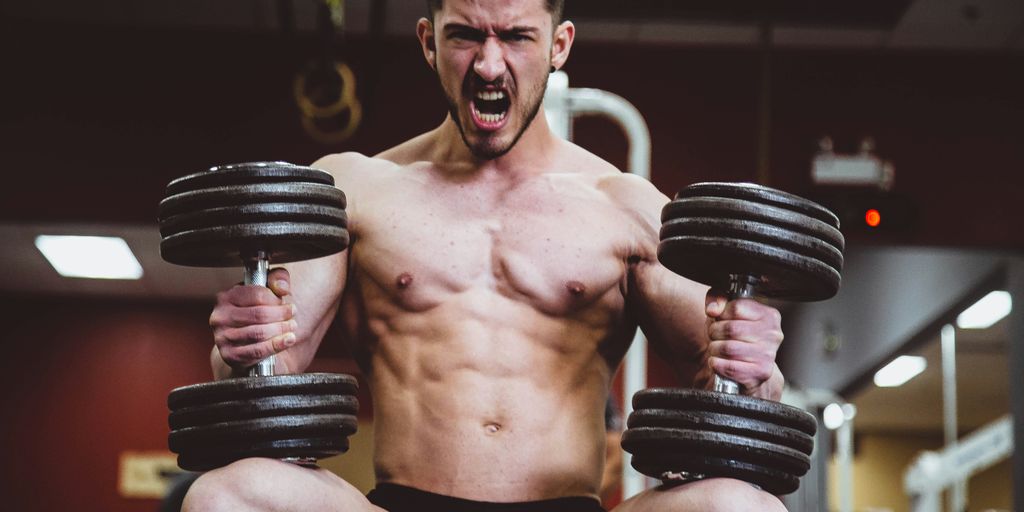Ever wondered how to get the most out of your gym time? Compound exercises are your answer. These moves hit multiple muscle groups at once, making your workout efficient and effective. Whether you’re aiming for muscle growth, strength gains, or just a solid full-body workout, mastering the basics like deadlifts, squats, and bench presses can take you a long way. Let’s dive into how these exercises can fit into your gym routine and why they’re essential for anyone serious about strength training.
Key Takeaways
- Compound exercises are efficient, working multiple muscles at once.
- Deadlifts, squats, and bench presses are foundational for building strength.
- A balanced gym routine should mix compound and isolation exercises.
- Progressive overload is crucial for muscle growth and strength gains.
- Full-body workouts are great for those with busy schedules.
Understanding the Power of Compound Exercises
Why Compound Exercises Are Essential for Muscle Growth
Compound exercises are like the Swiss Army knife of your workout routine. They hit multiple muscle groups at once, saving you time and effort. Think about it: why spend an hour isolating muscles when you can engage several at once? This approach not only helps in building muscle but also boosts your overall strength. Skipping compound exercises is like forgetting your headphones at the gym—it’s just not done.
The Science Behind Multi-Joint Movements
When you perform compound exercises, you’re essentially making your body work smarter, not harder. These movements involve multiple joints, which means they recruit more muscles in a single move. For example, a squat doesn’t just work your legs; it also engages your core and back. This multi-joint action leads to increased muscle activation, resulting in better muscle growth and strength gains.
How Compound Exercises Enhance Strength Training
Strength training is all about lifting heavier over time. Compound exercises are key to this because they allow you to handle heavier weights. The more weight you lift, the stronger you get. It’s a simple equation. Plus, these exercises help improve your coordination and balance, making you more efficient in other workouts. So, if you’re looking to get stronger and build muscle, compound exercises are non-negotiable.
Compound exercises are not just about lifting weights; they are about lifting your entire fitness game. They are efficient, effective, and essential for anyone serious about making gains in the gym.
The Big Three: Deadlifts, Squats, and Bench Press
Mastering the Deadlift for Maximum Gains
Deadlifts are often hailed as the ultimate test of total body strength. They work almost every muscle from head to toe, focusing on the glutes, hamstrings, and spinal erectors. Perfecting your deadlift technique can lead to significant muscle growth and strength gains. To get the most out of your deadlifts:
- Start with the right stance: Your feet should be hip-width apart, and your grip should be just outside your knees.
- Focus on form: Keep your back straight, chest up, and push through your heels.
- Progress steadily: Increase the weight gradually to avoid injury and improve strength over time.
Squats: The King of Full-Body Workouts
Squats are often referred to as the king of exercises because they target the largest muscle groups in your body, including the quads, hamstrings, and glutes. This not only helps in building muscle but also in burning calories. To maximize the benefits of squats:
- Maintain proper alignment: Your knees should track over your toes, and your back should stay straight.
- Go deep: Aim for a full range of motion to engage all the muscle fibers.
- Keep the core tight: This helps stabilize your body and protects your lower back.
Bench Press Techniques for Strength and Size
The bench press is a staple in any strength training routine, primarily targeting the chest, shoulders, and triceps. It’s a key exercise for building upper body strength and muscle mass. Here are some tips to enhance your bench press:
- Grip width matters: A wider grip will target the chest more, while a narrower grip focuses on the triceps.
- Control the descent: Lower the bar slowly to your chest to engage more muscle fibers.
- Drive through your feet: Keep your feet flat on the ground to stabilize your body and increase power.
The combination of deadlifts, squats, and bench presses forms the foundation of a powerful workout routine. Together, they engage multiple muscle groups, leading to greater muscle mass gains and increased calorie burn compared to isolation exercises. These exercises are not just about lifting heavy weights; they are about lifting smart and effectively to achieve your fitness goals.
Building a Balanced Gym Routine with Compound Exercises
Integrating Compound Movements into Your Workout
Incorporating compound lifts like squats, deadlifts, and bench presses into your gym routine can dramatically boost your progress. These exercises engage multiple muscle groups at once, making them efficient and effective. By focusing on these movements, you can achieve a shredded physique while building strength and muscle mass. Start by including a compound exercise at the beginning of each workout session to maximize energy and focus.
Balancing Compound and Isolation Exercises
While compound exercises are vital, don’t neglect isolation exercises. They target specific muscles and can help address weaknesses. A balanced routine might include three compound exercises and two isolation exercises per session. For example, pair a compound lift like the bench press with an isolation exercise like tricep extensions.
Creating a Sustainable Full-Body Workout Plan
To develop a sustainable workout plan, ensure you’re not overloading any single muscle group. Spread your compound exercises throughout the week, allowing for adequate recovery. Consider a three-day split focusing on different areas: upper body, lower body, and full body. This approach keeps your workouts fresh and prevents burnout.
Compound exercises are the cornerstone of any effective workout routine. By integrating them wisely, you can build muscle, enhance strength, and maintain a balanced physique.
Advanced Techniques to Maximize Muscle Growth
Progressive Overload: The Key to Strength Training
Progressive overload is the heart of compound exercises. It’s simple: lift more weight or do more reps over time. This approach ensures your muscles are always challenged, promoting growth. Think of it as a cycle—you gain strength, lift heavier, and in turn, gain more strength. You don’t need to max out every session. Instead, gradually increase your workload, maybe by adding a couple of pounds or doing an extra rep each week.
Incorporating Variations for Enhanced Results
Sticking to the same routine can lead to plateaus. Mix things up with different variations of your main lifts. For instance, swap out your regular squats for front squats or try Romanian deadlifts instead of conventional ones. These variations target muscles differently and can help break through stagnation. Plus, they keep your workouts fresh and exciting.
Avoiding Common Mistakes in Compound Exercises
Even seasoned lifters can slip up. One big mistake is neglecting form for the sake of lifting heavier. This not only limits gains but also increases injury risk. Always prioritize technique—it’s better to lift lighter with perfect form than heavier with poor execution. Another pitfall is ignoring warm-ups. A good warm-up preps your muscles and joints, reducing the chance of strains or sprains. Lastly, don’t forget to rest. Overtraining can lead to burnout and slow progress, so ensure you’re getting enough recovery time between sessions.
The Benefits of Full-Body Workouts for Busy Schedules
Efficiency of Full-Body Workouts
When time is tight, squeezing in a workout can feel like a chore. But with full-body workouts, you can get the most out of your gym time. Instead of splitting your routine into different days for each muscle group, full-body workouts target multiple areas in one go. This means fewer trips to the gym and more time for everything else in your life.
Imagine hitting all your major muscle groups in just a few sessions each week. You’re not just saving time; you’re also boosting your overall fitness. This approach is perfect if you’re juggling a hectic schedule but still want to stay in shape.
Adapting Workouts for Limited Time
Life gets busy, and sometimes, long workouts just aren’t feasible. Full-body routines are adaptable, allowing you to fit a solid workout into your day without stress. Whether it’s an early morning session or a quick lunchtime sweat, you can adjust your routine to fit your timetable.
Here’s a simple way to structure your full-body workout:
- Warm-up: 5-10 minutes of light cardio or dynamic stretching.
- Strength Training: Choose 3-4 compound exercises that target different muscle groups (e.g., squats, push-ups, deadlifts).
- Cool Down: 5 minutes of stretching or walking.
Maintaining Consistency with Compound Exercises
Consistency is key in any fitness journey, and full-body workouts make it easier to stick to a routine. By focusing on compound exercises, you engage multiple muscles at once, which not only saves time but also ramps up your results.
Think of exercises like squats, deadlifts, and bench presses. These moves work several muscles simultaneously, making your workout both efficient and effective. Plus, when you see progress in strength and endurance, it’s easier to stay motivated and keep coming back for more.
Full-body workouts are not just a time-saving hack; they’re a smart way to maintain fitness without overhauling your schedule. Embrace the efficiency and see how it can transform your approach to exercise.
Optimizing Your Gym Routine for Strength and Size
Choosing the Right Compound Exercises for Your Goals
When it comes to building strength and size, picking the right compound exercises is crucial. These exercises work multiple muscle groups at once, making them super efficient. Think of exercises like squats, deadlifts, and bench presses. Each of these targets several muscles, helping you get stronger and bigger faster. Here’s a quick list of compound exercises you might consider:
- Squats: Great for your legs and core.
- Deadlifts: Hits your back, legs, and grip strength.
- Bench Press: Targets your chest, shoulders, and triceps.
These exercises are the bread and butter of any strength training regimen. They push your body to adapt and grow, which is exactly what you want.
Structuring Your Workout for Maximum Efficiency
Now, let’s talk about how to structure your workouts. A well-organized workout doesn’t just happen; it takes planning. Here’s a simple way to set up your gym sessions:
- Warm-Up: Start with a light cardio session and dynamic stretches.
- Main Lifts: Begin with your heavy compound exercises. These should be the focus of your workout.
- Accessory Work: Follow up with lighter exercises that target specific muscle groups.
- Cool Down: Finish with stretching to help recovery.
Remember, it’s not about how long you spend in the gym, but how you use that time. Keep your workouts efficient by focusing on the quality of each rep.
Tracking Progress and Adjusting Your Routine
Tracking your progress is key to seeing results. Keep a workout journal or use an app to log your exercises, sets, and reps. This helps you see where you’re improving and where you might need to adjust your routine.
- Record Your Lifts: Write down the weights and reps for each exercise.
- Set Goals: Aim to increase your weights or reps over time.
- Review Regularly: Check your progress every few weeks and make changes as needed.
Consistency and patience are your best friends in the gym. Progress might be slow, but it’s steady. Keep pushing, and you’ll see the gains.
The Role of Compound Exercises in Muscle Growth
Understanding Muscle Hypertrophy and Strength
Muscle hypertrophy is all about increasing the size of your muscle fibers, and compound exercises are key players in this process. These exercises involve multiple joints and muscle groups, making them super efficient for muscle growth. When you do a squat, for instance, you’re not just working your legs. You’re engaging your core, glutes, and even your back. This multi-muscle action leads to increased muscle fiber recruitment, which is crucial for hypertrophy.
The Impact of Compound Exercises on Muscle Development
Compound exercises like deadlifts, squats, and bench presses are fundamental for developing overall muscle mass. These movements stimulate the release of growth-promoting hormones like testosterone and growth hormone. These hormones are vital for muscle growth and repair. Plus, by targeting multiple muscle groups at once, compound exercises help you build a balanced physique. Instead of just bulking up one area, you’re getting stronger all over.
Strategies for Long-Term Muscle Growth
To make the most out of compound exercises, you need to focus on progressive overload. This means gradually increasing the weight, reps, or intensity of your workouts. Start with the basics like push-ups or pull-ups, and as you get stronger, add more challenging variations. It’s also important to mix things up. While compound exercises are great, don’t forget to include some isolation exercises to target specific muscles and correct any imbalances.
Consistency is key. Stick to a routine that includes both compound and isolation exercises, and you’ll see steady progress over time. Remember, it’s not just about lifting heavy; it’s about lifting smart.
Wrapping It Up: The Power of Compound Exercises
So, there you have it. Compound exercises are like the Swiss army knife of workouts. They hit multiple muscles at once, making them super efficient. Whether you’re short on time or just want to get the most bang for your buck, these moves are the way to go. Plus, there’s something satisfying about lifting heavy and feeling like a beast. Just remember, it’s not just about the weight—form is key. So, next time you’re at the gym, give these exercises a shot. Your body will thank you, and who knows, you might even enjoy it!
Frequently Asked Questions
What are compound exercises?
Compound exercises are moves that work multiple muscles at the same time. For example, a squat uses your legs, hips, and core all at once.
Why are compound exercises important for muscle growth?
They help you build more muscle because they work several muscle groups together, making your workout more effective.
Can beginners do compound exercises?
Yes, beginners can do compound exercises. It’s a good idea to start with lighter weights to learn the right form.
How often should I do compound exercises?
You can do compound exercises 2-3 times a week, depending on your fitness goals and schedule.
What are some examples of compound exercises?
Some examples are squats, deadlifts, bench presses, and pull-ups. They all work multiple muscles at once.
Do I need special equipment for compound exercises?
Not always. Some exercises, like push-ups or lunges, can be done without any equipment. Others might need weights or machines.



